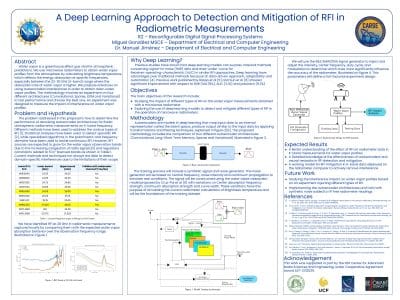Authors
Miguel Gonzalez, Manuel Jimenez
Abstract
Water vapor is a greenhouse effect gas vital for atmospheric predictions. We use microwave radiometers to obtain water vapor profiles from the atmosphere by calculating brightness temperature, which reflects the energy absorption at specific frequencies, especially between the 22-30 GHz (K-band) range where the absorption rate of water vapor is higher. We propose advances on using autoencoders interferences in order to obtain clean water vapor profiles. The methodology involves an experiment on four different architectures (Convolutional, Sparse, LStM and Variational) to test performance and choose the best one. An experiment was designed to measure the impact of interference on water vapor profiles.

